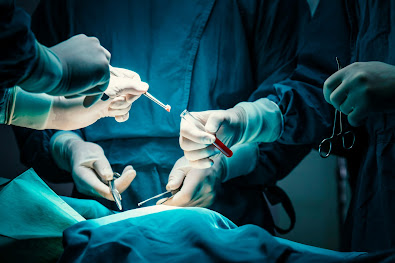Mole Evaluation Mastery: Dermoscopy Insights from Dubai
In the ever-evolving landscape of dermatology, mole evaluation has become a cornerstone in identifying and preventing potential skin issues. This article delves into the comprehensive world of Dermoscopy Mole evaluation in Dubai, a hub of medical advancements, and provides unique insights into mole evaluation mastery.
Understanding Dermoscopy
Dermoscopy, often referred to as chemiluminescence microscopy, is a non-invasive diagnostic tool used by dermatologists to examine skin lesions. Unlike traditional methods, dermoscopy involves the use of a handheld device with magnification and light, enabling a closer and more detailed examination of moles and skin abnormalities.
Key Elements of Mole Evaluation
Pigment Network Analysis
One crucial aspect of mole evaluation is analyzing the pigment network, which refers to the intricate pattern formed by pigmented lines within a mole. The diverse patterns offer valuable information about the nature of the mole, helping dermatologists distinguish between benign and potentially harmful lesions.
Vascular Patterns Examination
Examining the vascular patterns in moles is equally important. Changes in blood vessels can indicate abnormal growth or malignancy. Dermoscopy allows for the identification of specific vascular structures, aiding in the early detection of potential issues.
Advanced Dermoscopic Techniques in Dubai
Reflectance Confocal Microscopy (RCM)
Dubai stands at the forefront of dermatological innovation with the incorporation of Reflectance Confocal Microscopy (RCM). This advanced technique provides real-time, high-resolution imaging of skin lesions at a cellular level, enhancing the accuracy of mole evaluation.
Total Body Photography (TBP)
Total Body Photography is another cutting-edge approach embraced in Dubai. This technique involves capturing images of the entire body's skin surface, allowing dermatologists to track changes in moles over time. TBP is particularly beneficial for individuals with a high risk of developing skin cancers.
The Role of Artificial Intelligence in Mole Evaluation
In recent years, Artificial Intelligence (AI) has made significant strides in dermatology. AI algorithms, when fed with dermoscopic images, can assist dermatologists in analyzing vast amounts of data rapidly. Dubai's medical community actively integrates AI into mole evaluation processes, enhancing diagnostic accuracy.
Frequently Asked Questions (FAQs)
How often should I get my moles checked?
Regular mole checks are essential, with an annual examination recommended. Individuals with a family history of skin cancers or noticeable changes in their moles should consult a dermatologist promptly.
What are the signs of a potentially harmful mole?
Asymmetry, irregular borders, uneven color distribution, and a diameter larger than six millimeters are potential signs of a harmful mole.
Is dermoscopy painful?
No, dermoscopy is a non-invasive procedure that involves no pain. It is a quick and efficient way to examine moles without any discomfort.
How reliable are AI-based mole evaluations?
AI-based evaluations are becoming increasingly reliable, providing a quick analysis of dermoscopic images. However, human expertise remains crucial for accurate diagnosis.
Are there specific mole types more common in Dubai?
Dubai's climate can contribute to the prevalence of atypical moles. Regular skin checks are especially important in this region due to increased sun exposure.
Conclusion
In the realm of mole evaluation mastery, Dubai emerges as a pioneer, integrating advanced dermoscopic techniques and artificial intelligence. Understanding the key elements of mole evaluation, coupled with innovative approaches like Reflectance Confocal Microscopy and Total Body Photography, ensures a comprehensive and accurate assessment of skin lesions. Stay proactive in your skin health by embracing regular mole checks and leveraging the latest advancements in dermatology, as exemplified by the dynamic medical landscape of Dubai.




Comments
Post a Comment